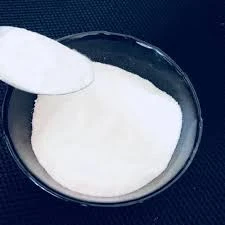
Nov . 22, 2024 00:09 Back to list
hpmc glass transition temperature
Understanding the Glass Transition Temperature in HPMC Implications and Applications
Hydroxypropyl methylcellulose (HPMC) is a cellulose derivative widely used in various industries including pharmaceuticals, food, construction, and cosmetics. One crucial property of HPMC is its glass transition temperature (Tg), an important parameter influencing the performance and stability of HPMC-based formulations. In this article, we will delve into the concept of glass transition temperature, its significance concerning HPMC, and the implications for its applications.
What is Glass Transition Temperature?
Glass transition temperature is defined as the temperature range at which a polymer transitions from a hard and relatively brittle state into a more flexible and rubbery state. This phenomenon is critical in understanding the behavior of polymers and the materials made from them. Below the Tg, the molecular mobility is severely restricted, leading to a glassy state where the material is rigid and has limited workability. Above this temperature, the polymer exhibits increased chain movement, resulting in enhanced ductility and flexibility.
Importance of Tg in HPMC
For HPMC, the glass transition temperature plays a pivotal role in determining its suitability for various applications. Understanding the Tg allows manufacturers to predict how the material will behave under different temperature conditions and how it will interact with other components in a formulation.
1. Pharmaceutical Applications In the pharmaceutical industry, HPMC is often used as a film-forming agent, thickener, and stabilizer in drug formulations. The glass transition temperature influences the dissolution rates of drugs when HPMC is used as a matrix in controlled-release formulations. A lower Tg indicates that the matrix is more amorphous and will allow for quicker drug release, whereas a higher Tg suggests slower drug release properties. This knowledge is essential for formulators aiming to achieve specific release profiles in therapeutic applications.
hpmc glass transition temperature

2. Food Industry HPMC serves as a food additive for its thickening, emulsifying, and stabilizing properties. The glass transition temperature affects the texture and shelf life of food products. If the Tg of HPMC is lower than the storage temperature of a food product, the HPMC will remain in a flexible state, potentially improving product texture. Conversely, if the Tg is higher, it could cause brittleness and affect the overall quality of the food.
3. Building Materials In construction, HPMC is used in mortars, plasters, and tile adhesives. The Tg of HPMC affects the workability and curing time of these products. Understanding the temperature dynamics allows manufacturers to optimize formulations for varying climatic conditions, ensuring that the materials perform effectively without cracking or losing adhesion as temperatures fluctuate.
Factors Influencing Tg in HPMC
The glass transition temperature of HPMC can be influenced by various factors including the degree of substitution, molecular weight, and the presence of plasticizers. By altering these parameters, it is possible to tailor the Tg of HPMC to meet specific requirements for different applications. For instance, increasing the degree of hydroxypropyl and methyl substitution can lead to a decrease in Tg, enhancing its flexibility and processability.
Conclusion
The glass transition temperature is a critical characteristic of HPMC that significantly influences its behavior in various applications. Understanding and controlling the Tg allows researchers and manufacturers to optimize HPMC for its intended use, particularly in pharmaceutical, food, and construction industries. As research continues to advance in the field of polymer science, the ability to fine-tune Tg properties will enable the development of more effective and versatile HPMC formulations, providing greater benefits across multiple sectors. By comprehensively understanding this property, stakeholders can ensure that HPMC-based products meet performance expectations and customer needs effectively.
-
Versatile Hpmc Uses in Different Industries
NewsJun.19,2025
-
Redispersible Powder's Role in Enhancing Durability of Construction Products
NewsJun.19,2025
-
Hydroxyethyl Cellulose Applications Driving Green Industrial Processes
NewsJun.19,2025
-
Exploring Different Redispersible Polymer Powder
NewsJun.19,2025
-
Choosing the Right Mortar Bonding Agent
NewsJun.19,2025
-
Applications and Significance of China Hpmc in Modern Industries
NewsJun.19,2025







